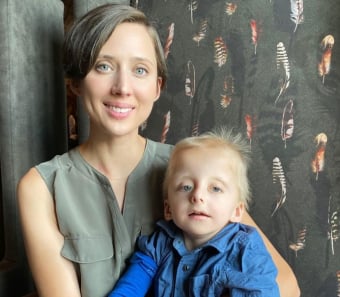5 weeks
81479
$2,000
Central hypoventilation syndrome is an autosomal dominant disorder that is characterized by shallow breathing with occasional apnea. Age of onset is typically in the newborn period, and the features are due to autonomic dysregulation. Other symptoms may include cardiac arrhythmias, temperature instability, profuse sweating, and diminished reactivity of the pupils. Hirschsprung disease occurs in up to 20% of affected individuals with severe constipation in a significant number of additional patients. An increased risk for neural crest tumors such as neuroblastoma, ganglioneuroma, and ganglioneuroblastoma is present with a higher risk among individuals with non-polyalanine expansions in PHOX2B. Ventilatory support is required throughout life although some individuals will only require support during sleep.
Next Generation Sequencing
The current design of this panel covers all genes and the flanking intronic sequences. This method allows for analysis of greater than 98% of the targeted sequence for the detection of nucleotide substitutions and small deletions and duplications. Large deletions and duplications will not be detected by this panel. Mutations and variants identified on the panel are confirmed with Sanger sequencing. Novel and apparently pathogenic changes are reported when found within the coding region as well as within 10 basepairs of each intron/exon boundary for each gene. Promoter and 3' untranslated sequences are not included in the current analysis. It should be noted that the current protocol is not specifically designed to detect copy number alterations and single exon deletions may require additional follow-up to determine whether or not they represent technical artifacts. Polyalanine expansion analysis is included for the PHOX2B gene. We recommend further array-based testing to more accurately address the concerns of dosage alterations. The Cytogenetic Laboratory at GGC offers a high resolution microarray to complement the sequencing. The GGC Diagnostic Laboratory Directors are available for further consultation regarding the limitations of the NGS and array testing procedures.
The preferred sample type is 3-5 ml of peripheral blood collected in an EDTA (purple top) tube. Extracted DNA and saliva are also accepted for this test. Saliva samples must be submitted in an approved saliva kit. Contact the lab to receive a saliva kit or to have one sent to your patient.
The specimen should be kept at room temperature and delivered via overnight shipping. If shipment is delayed by one or two days, the specimen should be refrigerated and shipped at room temperature. Do not freeze the specimen. Samples collected on Friday can be safely designated for Monday delivery.
Call our laboratory at 1-800-473-9411 or contact one of our Laboratory Genetic Counselors for assistance.
Robin Fletcher, MS, CGC
Falecia Thomas, MS, CGC
Alex Finley, MS, CGC
